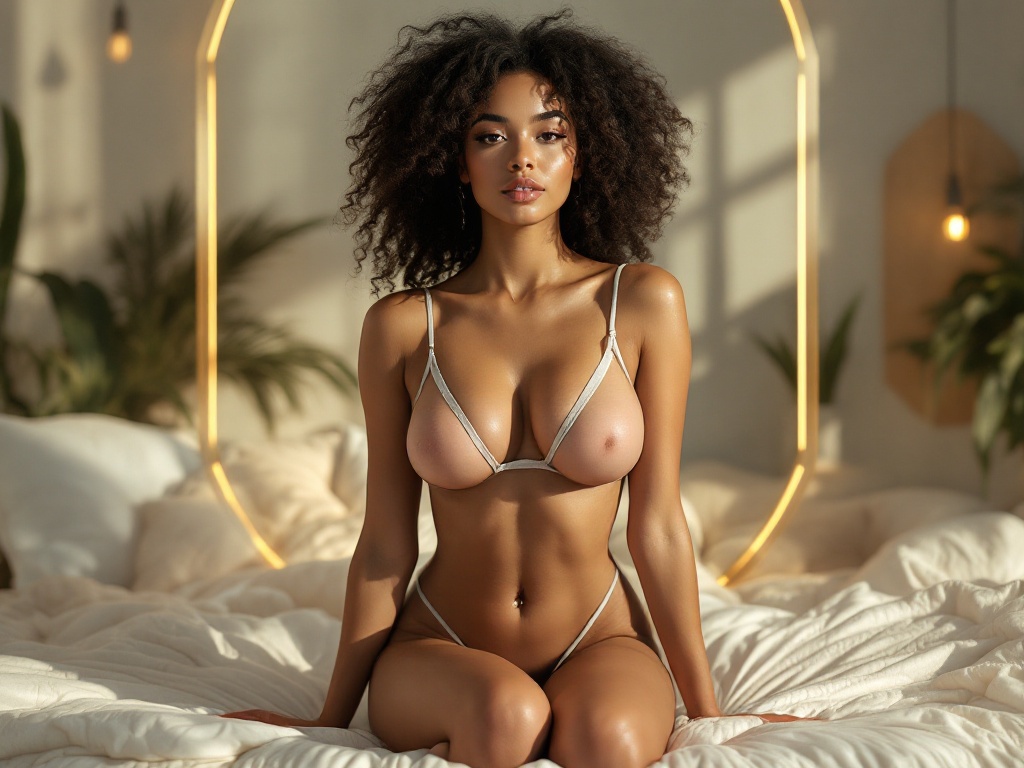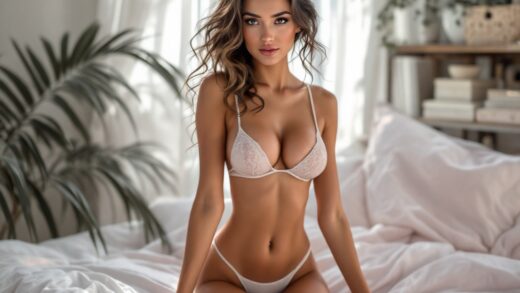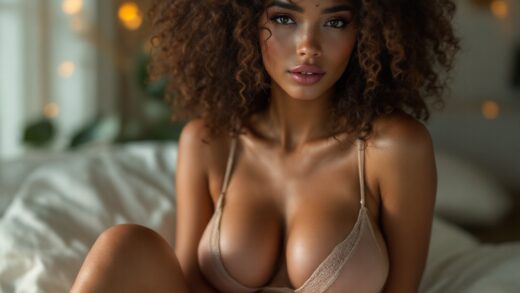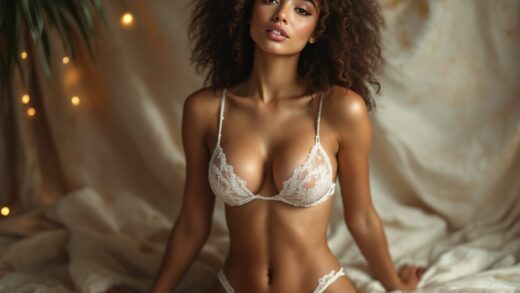As we step into the digital era, the convergence of technology and artistry presents a fascinating terrain for exploration. One of the most compelling facets of this integration is found in AI erotic art, a genre that both intrigues and provokes thought. With technological advancements in artificial intelligence, artists can now venture into realms of creative expression previously believed to be reserved for human creators. This foray into the world of AI not only unravels the intricacies of machine-generated erotic imagery but also sparks important dialogues about ethics, innovation, and the evolution of art itself. For those new to this field, deciphering the technological foundations of these art forms may appear overwhelming, yet it is immensely gratifying. In this guide, we will simplify the core aspects of AI technology used in erotic artistry along with the frameworks that facilitate its creation.
Grasping AI and Its Art Applications
Artificial Intelligence (AI) has emerged as a revolutionary force across a multitude of domains, with art being no exception. It encompasses the mimicking of human intellect through machines that are adeptly programmed to think, learn, and create. More specifically, machine learning—a key aspect of AI—allows these systems to enhance their abilities progressively by analyzing vast datasets. The structure of neural networks fundamentally underpins much of this technology, emulating the brain’s network of neurons to discern patterns and generate results. Within the artistic sphere, AI acts as both an instrument and a co-creator, capable of crafting works that aesthetically resonate with humanity while stretching the limits of imagination. Those ready to delve into AI erotic art will uncover a harmonious blend of technology and creativity that elicits both awe and critical contemplation.
What Exactly is AI?
- The term AI refers to a spectrum of algorithms crafted to replicate functions akin to human cognition.
- Machine learning allows AI frameworks to absorb knowledge from data, evolving continuously to yield more refined outputs.
- Neural networks provide a framework ideal for in-depth data processing, making them suitable for creative endeavors.
The Impact of AI on Art Creation
The role of AI in artistic creation transcends mere automation; it signifies a transformation of the creative process. Historically, AI has garnered attention for its proficiency in producing paintings, music, and even poetry. By studying pre-existing works, AI systems can generate new pieces that not only emulate human creativity but also introduce innovative styles and ideas. This interplay between human and machine intellect cultivates a collaborative artistic atmosphere where distinctions between creator and creation intriguingly dissolve. Furthermore, consider how AI-generated art can inspire and incite human artists to reevaluate their creative limits.

Essential Technologies Behind AI Erotic Art
A variety of cutting-edge technologies come together to animate the realm of AI erotic art. Below, we spotlight several key components that drive this distinctive art form, offering captivating insights into how machines conceive and construct erotic imagery.
Generative Adversarial Networks (GANs)
Among the most revolutionary technologies in AI art generation are Generative Adversarial Networks, commonly known as GANs. These comprise two neural networks—the generator and the discriminator—engaged in a competitive process to produce ever-more life-like images. While the generator seeks to create realistic visuals, the discriminator evaluates their quality, providing feedback that guides the generator toward enhancement. This dynamic interplay allows for an astonishing level of detail and depth in the generated artwork. The impact of GANs on erotic art is monumental, enabling the creation of pieces that challenge traditional portrayals of sexuality.
Neural Style Transfer
Neural style transfer stands as another crucial technology shaping AI erotic art. This methodology focuses on transforming images by merging the essence of one piece with the stylistic characteristics of another, yielding extraordinary artistic outcomes. By applying the stylistic elements of classical paintings or contemporary designs to erotic imagery, artists achieve breathtaking results. This approach also presents an avenue to infuse personal expression into AI-generated works, melding the familiar with the daring. Such adaptability empowers creators to experiment with a range of visual experiences, thereby broadening the appeal and significance of erotic art.
Analyzing Trends in AI Erotic Art
| Aspect | Current Trends | Potential Future Directions |
|---|---|---|
| Technology | GANs, neural style transfer | Developments in VR and AR integration |
| Ethics | Conversations on consent and representation | Frameworks regulating AI art |
| Acceptance | Growing interest in AI-generated creations | Diverse cultural reception and critique |
Ethical Issues Surrounding AI Erotic Art
With the burgeoning enthusiasm for AI erotic art, significant ethical questions come to the forefront that warrant careful consideration. The risk of misuse and misrepresentation in this genre calls for a critical examination of consent and the fidelity of portrayal. Both artists and audiences must contend with the consequences of crafting and disseminating erotic imagery that may not honor the boundaries of representation. Grasping the legal parameters surrounding copyright and ownership is equally crucial in navigating the complexities of AI-generated erotic creations. This section aims to delve into the delicate balance between innovation and ethics, encouraging all participants to assess the effects of their artistic expressions.

Consent and Representation
- Consent is fundamental when portraying intimate themes in art.
- AI-generated erotic artworks raise essential queries about whether depictions honor the desires and identities of individuals.
- Inclusivity and accurate representation are vital to avoid perpetuating damaging stereotypes.
Copyright and Ownership Concerns
Another key component of AI erotic art revolves around copyright and ownership. The divergence between human-created and AI-generated art creates a complex landscape. Legal ramifications differ across jurisdictions, with some regions still formulating frameworks to tackle these dilemmas. Artists employing AI tools should be cognizant of the possible challenges regarding their rights over the generated works. It is essential for both creators and consumers to familiarize themselves with laws governing artistic content to cultivate a respectful and lawful art environment.
The Horizon of AI Erotic Art
As we cast our gaze toward the future, the trajectory of AI erotic art appears set to be as vibrant and unpredictable as the technology it relies upon. With unceasing advancements in algorithms and enhanced processing abilities, we can anticipate more intricate and engaging creations on the horizon. Additionally, the integration of virtual reality (VR) and augmented reality (AR) could transform how audiences experience and interact with erotic art, permitting them to fully immerse in the artistic narrative. As societal attitudes evolve, AI erotic art will likely continue to ignite discussions about the essence of creativity and the significance of digital artistry. Ultimately, the voyage into this dynamic landscape will be influenced by both technological progress and cultural shifts.
Evolving Technologies and Methodologies
- Emerging AI algorithms will enhance realism within generated art.
- Greater interaction with artwork via VR/AR technologies.
- Collaborations across disciplines will introduce fresh perspectives to erotic art.
Shifting Perceptions and Acceptance
Societal attitudes towards AI-generated creations are continuously morphing. As public consciousness of AI capabilities rises, the acceptance of AI erotic art is likely to grow. Cultural movements also play a critical role in shaping these perceptions, challenging traditional notions of sexuality and expression. As dialogue around these themes deepens, the appreciation and acceptance of AI-generated erotic art may flourish, fostering an environment for diverse artistic voices. By acknowledging the transformative potential of AI, we forge a path toward a future brimming with possibilities.
Conclusion
AI erotic art represents a stunning confluence of technology, creativity, and ethical considerations. As we navigate this exhilarating domain, it becomes crucial for artists, consumers, and society to engage thoughtfully with the intricacies it encompasses. Familiarity with the underlying technologies demystifies the creative journey, while reflection on ethical matters emphasizes the accountability that accompanies artistic expression. The discourse surrounding AI erotic art is as vital as the art itself; it paves the way for profound inquiries into creativity and representation in our digital age. Embracing this extraordinary fusion of artistry can lead to enriching experiences, pushing boundaries and promoting a deeper understanding of human sensuality.
Frequently Asked Questions
- What is AI erotic art?
AI erotic art refers to artworks generated using artificial intelligence technologies, often delving into themes of sexuality and intimacy. - How does AI create erotic art?
AI employs algorithms and models like GANs and neural networks to construct images based on patterns gleaned from existing artistic styles. - Is AI erotic art legal?
The legality of AI erotic art is contingent upon copyright regulations and local laws, especially concerning consent and individual representation. - Can anyone create AI erotic art?
Certainly, with access to the right tools and software, anyone can experiment with AI to produce their own iterations of erotic art. Grasping the ethical implications is, however, crucial. - What technology is most influential in AI erotic art?
Generative Adversarial Networks (GANs) rank among the most impactful technologies, facilitating the creation of realistic images by utilizing a competitive structure between two neural networks.


